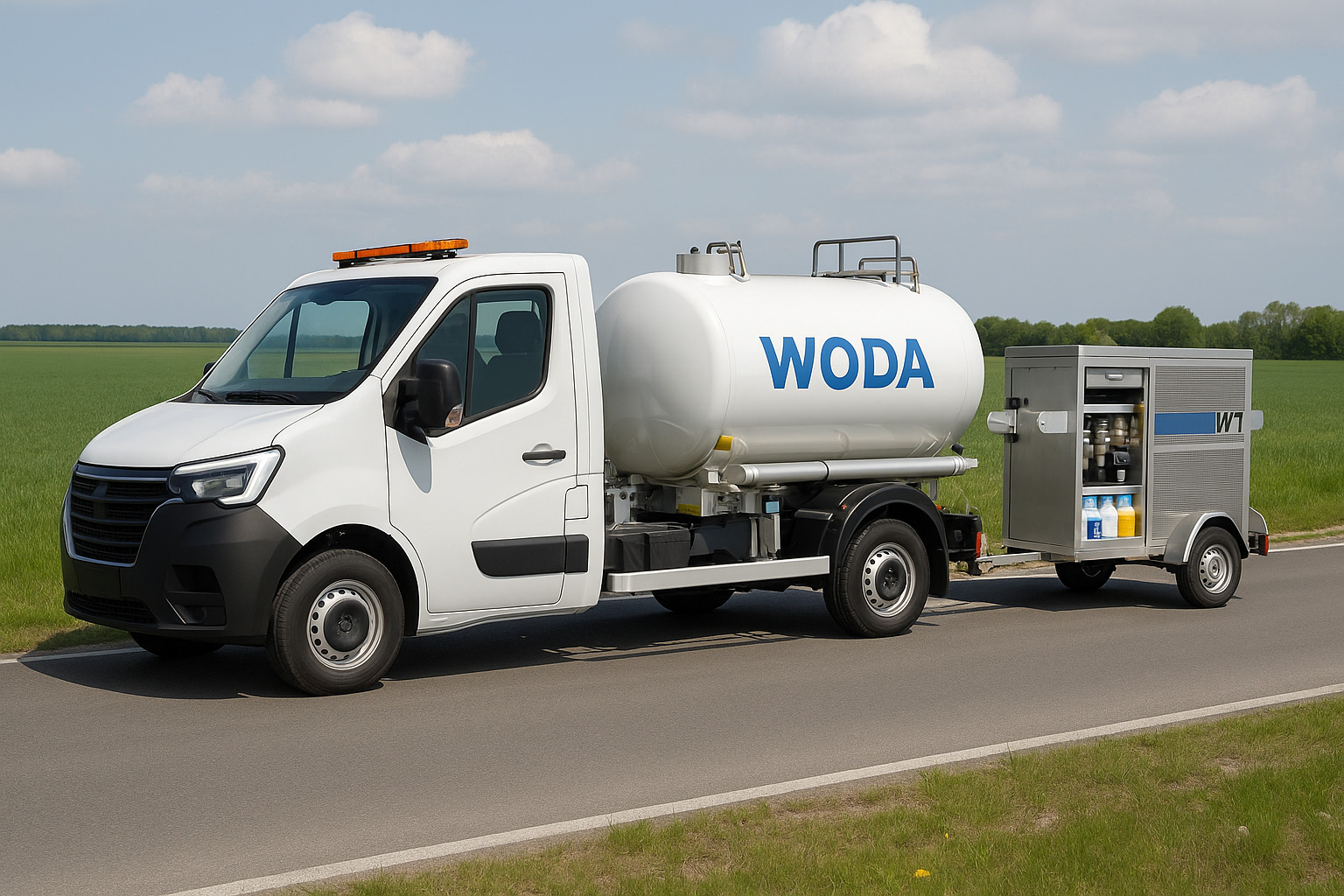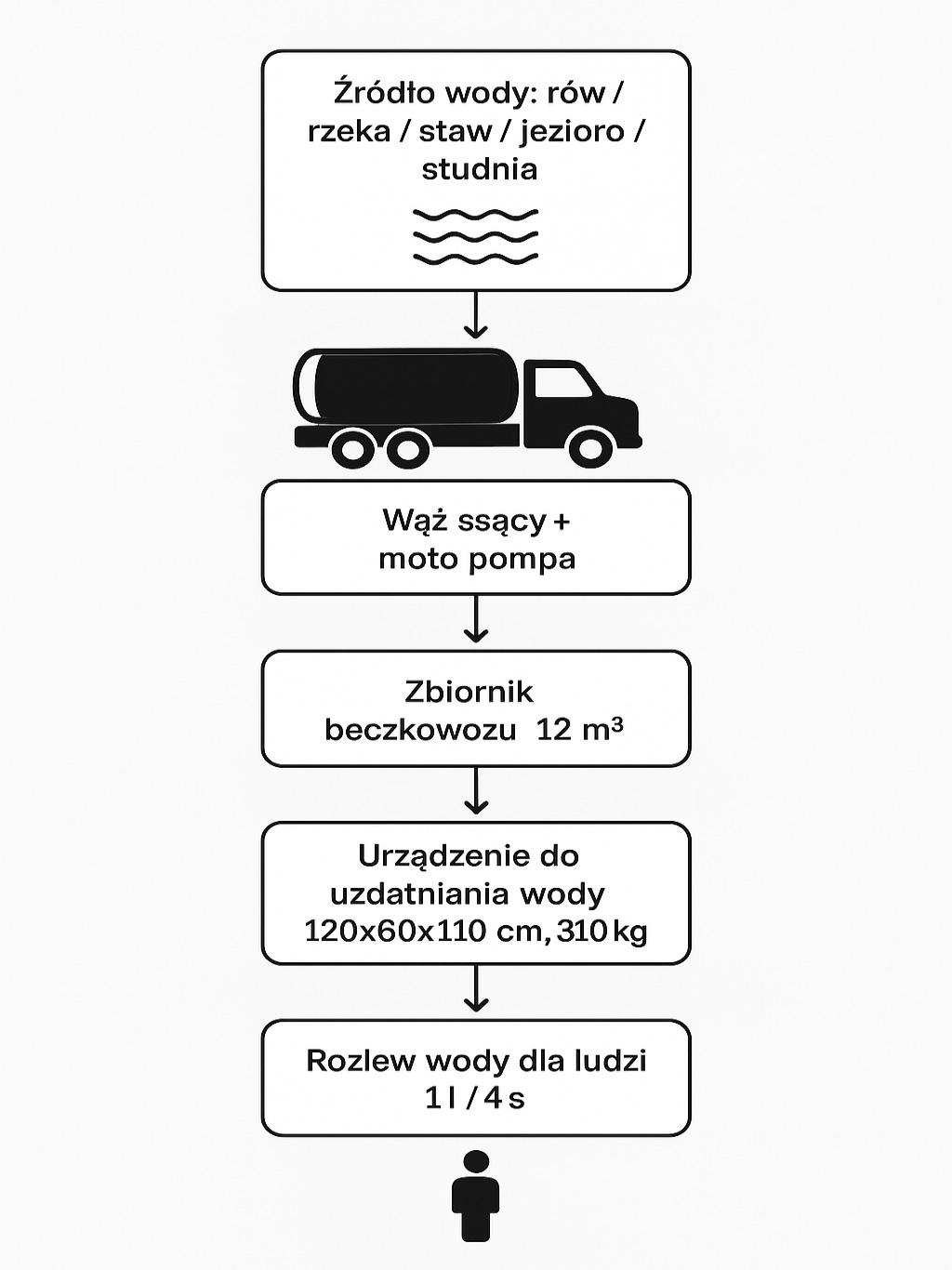Mobility of a water treatment system based on the combination of a water tanker with a surface water purification unit
In crisis or emergency situations, or in places with limited access to drinking water, the ability to quickly and effectively treat water regardless of its source is crucial. A system based on combining a water tanker with a compact surface water treatment unit provides an optimal solution in such conditions.
The mobility of this system results from the use of a 12 m³ water tanker with a capacity of 1 m³/h, which can draw water from any available source—ditch, river, pond, lake, or well. Water is transported to the tank via a suction hose and motor pump, allowing quick preparation of batches of water for treatment in any location.
The system’s flexibility comes from the compact dimensions of the water treatment unit—a box measuring 120×60×110 cm and weighing 310 kg. Such small dimensions allow transport and operation by a small team, as well as easy adaptation to different types of tankers. Water flows from the tanker through the treatment unit and is then dispensed directly for people at a rate of 1 l/4 s, ensuring a continuous supply of drinking water.
The efficiency of the system depends primarily on continuous water intake and proper filtration and disinfection. Thanks to its mobility, the system can be quickly relocated as needed, ensuring uninterrupted access to water in challenging field conditions. The combination of a high-capacity water tanker, a compact treatment unit, and direct water dispensing makes the system both effective and flexible for emergency, humanitarian, or military operations.
Key advantages:
1. Mobility and rapid deployment
Thanks to the configuration combining a mobile water storage unit with instant treatment and simple operation on a tanker truck, the system can be quickly relocated to any location—an invaluable asset in rescue operations, construction sites, or areas lacking water supply infrastructure.
2. Effective surface water filtration
Water from rivers, lakes, or retention reservoirs is often the most demanding in terms of quality. Our system uses advanced filtration processes, eliminating chemical, biological, and mechanical contaminants, ensuring top-quality drinking water.
3. Capacity tailored to real needs
The treatment module with a capacity of 1 m³/h allows continuous supply for small communities during war, climate or weather disasters, while also enabling scalability through the quick deployment of additional units.
4. Reduced logistics and water storage costs – flexibility of water sources
The mobile system eliminates the need to transport large volumes of drinking water and effectively shortens the distance between the water source and the end user, reducing fuel costs, transport time, and the risk of contamination during transit.
5. Strategic flexibility for water operators and emergency services
The system can operate independently of the local water supply network, supporting emergency actions, mass events, or work in remote locations. This gives operators a tool for rapid response and resource optimization.


Summary:
The 1 m³/h mobile surface water treatment system is a combination of technology, mobility, and reliability. It provides clean water in places where access is limited, minimizes logistics costs, and ensures full control over water safety. It is not only an investment in equipment but also a strategic step toward independence and efficiency in water resource management.



